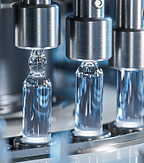Article | 29 May 2024
Overview of recent developments regarding the distinction between marketing and non-commercial information in relation to medicinal products

Marketing of medicinal products in Sweden is strictly regulated, for example by the Swedish Medicinal Products Act (2015:315), the general rules on marketing in the Swedish Marketing Act (2008:486) and the Ethical Rules for the Pharmaceutical Industry in Sweden (LER). However, non-commercial information is protected by the constitutional rules on freedom of speech and therefore falls outside the rules on marketing of medicinal products. To pharmaceutical companies, the distinction between commercial and non-commercial information is therefore of significant importance. This article provides an overview of recent developments in this field, and offers insights into the key takeaways.
Background
In Sweden, the Medicinal Products Agency (MPA) monitors marketing of medicinal products. In addition, such information is subject to review by the Information Examiner Committee (IGN) and the Information Practices Committee (NBL), bodies that supervise compliance with LER by the members of the Swedish Association of the Pharmaceutical Industry (LIF). Two decisions relevant to the distinction between commercial and non-commercial information have recently been issued by IGN and NBL.
SUMMARY OF THE DECISIONS
The first case
In the first case (NBL 1131/23), a pharmaceutical company had published three press releases about its medicinal products on MyNewsdesk. The issue was whether the press releases were commercial in nature and, if so, whether the company had marketed a medicinal product that had not yet received marketing authorisation in Sweden. NBL also examined whether two other products had been marketed outside the approved indication, and without the required support in the summary of product characteristics.
NBL pointed out that previous decisions have held that the mere fact that information is posted on MyNewsdesk does not automatically make it commercial. Other aspects of the case must also be considered. Thus, NBL clarified that a presentation is considered commercial information if (1) it has a commercial purpose and (2) it relates to purely commercial circumstances. Given the constitutional protection of freedom of speech, it is often advisable in cases of doubt to regard information as non-commercial. NBL also noted that, in considering these issues, NBL has in previous decisions taken the importance of free medical debate into account, which requires restraint in restricting freedom of speech through self-regulatory measures in the pharmaceutical sector. However, from a marketing ethics point of view, it is unacceptable for pharmaceutical companies to try to circumvent the rules on commercial information by making their commercial communications appear non-commercial.
NBL found that all the press releases had a clear promotional tone. They featured prominent images of doctors and had positive headlines about the medicinal products in question. The text contained positive language that did not appear to be objective and balanced. Moreover, the drawbacks of competing products were identified and compared to the medicinal product in question, and product names were used on several occasions. The presentation of positive wording prior to the introduction of the Phase II study reinforced the overall commercial impression. After an overall assessment, all three press releases were found to contain information related to purely commercial matters and to have a commercial purpose. On that basis, the information was considered to be commercial. Accordingly, the press releases were to be assessed in accordance with LER.
Despite its conclusions in the present case, NBL emphasised that press releases can be considered non-commercial information as long as they are designed in such a way that they do not constitute marketing. Consequently, it is acceptable to use statements from experts, including healthcare professionals, as long as they are balanced and presented in a nuanced way, and are otherwise compatible with LER.
The second case
The second case (IGN 533), concerned an advertisement in the form of an article, but it was clearly stated at the top that “This entire page is an advertisement.” The issue was whether the article was of a marketing character and thus constituted commercial information. If so, the information provided was insufficient to meet the requirements set out in LER. Furthermore, the statements made by doctors in the article could also be in breach of the ban on healthcare professionals making statements as guarantors of a medicinal product.
The pharmaceutical company in question referred to the previously mentioned case and asserted that its article differed from the press releases in that the image of the doctor was less prominent and the language more balanced and objective.
IGN reiterated that its assessment of whether information is commercial or non-commercial is based on the content and purpose of the presentation. IGN agreed that the doctor’s statements were relatively balanced, but still considered that positive product claims for the medicinal product in question were given a prominent place in the advertisement, and thereby presented the medicinal product in a more favourable light than its competitors. Thus, the information was considered to be commercial in nature and subject to LER. The way the doctor’s statements were presented was considered to be in breach of LER as this gave the impression that the doctor was endorsing the medicinal product in question.
Conclusions
For information to fall outside the scope of LER, it must not be promotional in nature. Press releases and articles should have general newsworthiness and provide objective, balanced and concise information about the medicinal product. Product name and active ingredient should be kept to a minimum.
Using statements from experts, including healthcare professionals, prominent images, positive headlines and overly positive language in the statements may contribute to the promotional nature of the information. This may also give the impression that the healthcare professionals are speaking as guarantors of the products, which is contrary to LER.
Setterwalls will continue to monitor and keep up to date on any further developments in this area.


